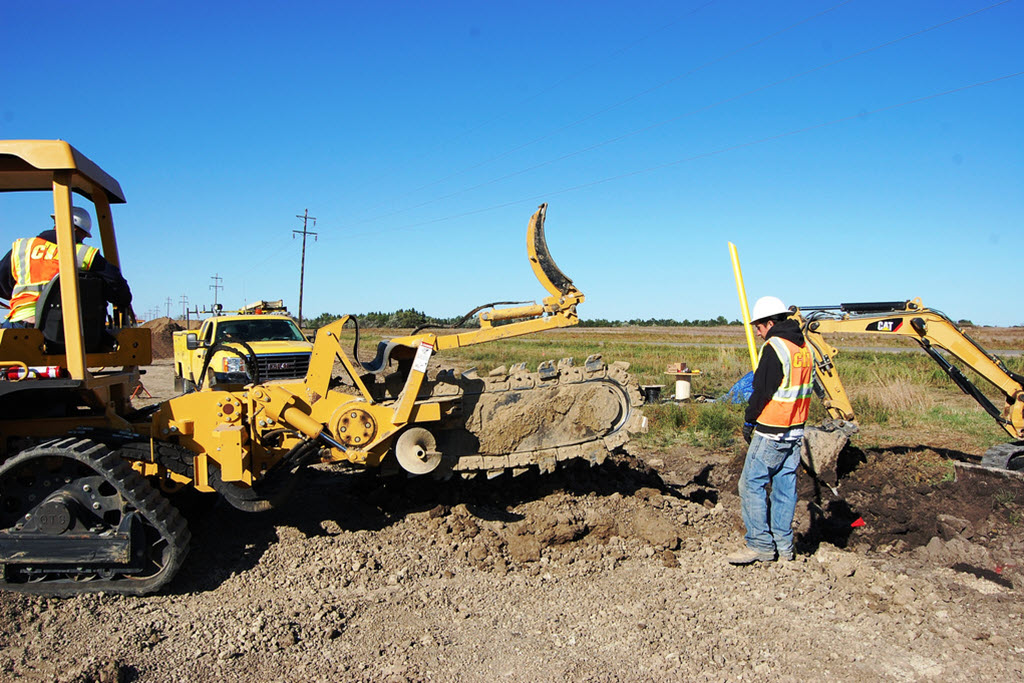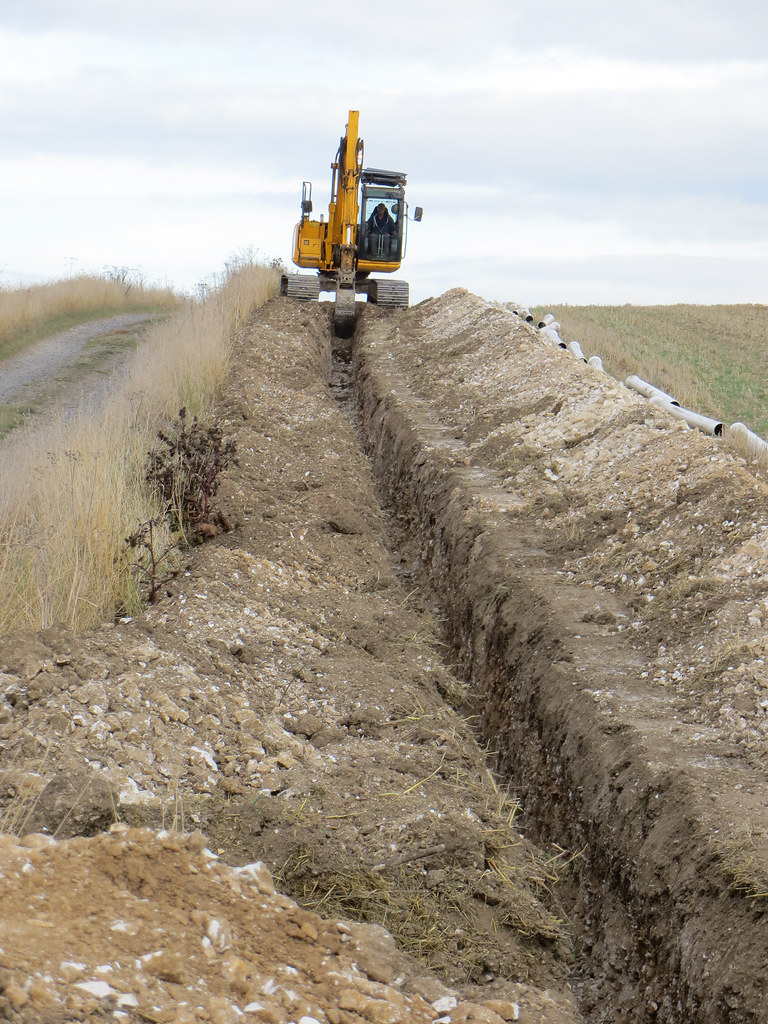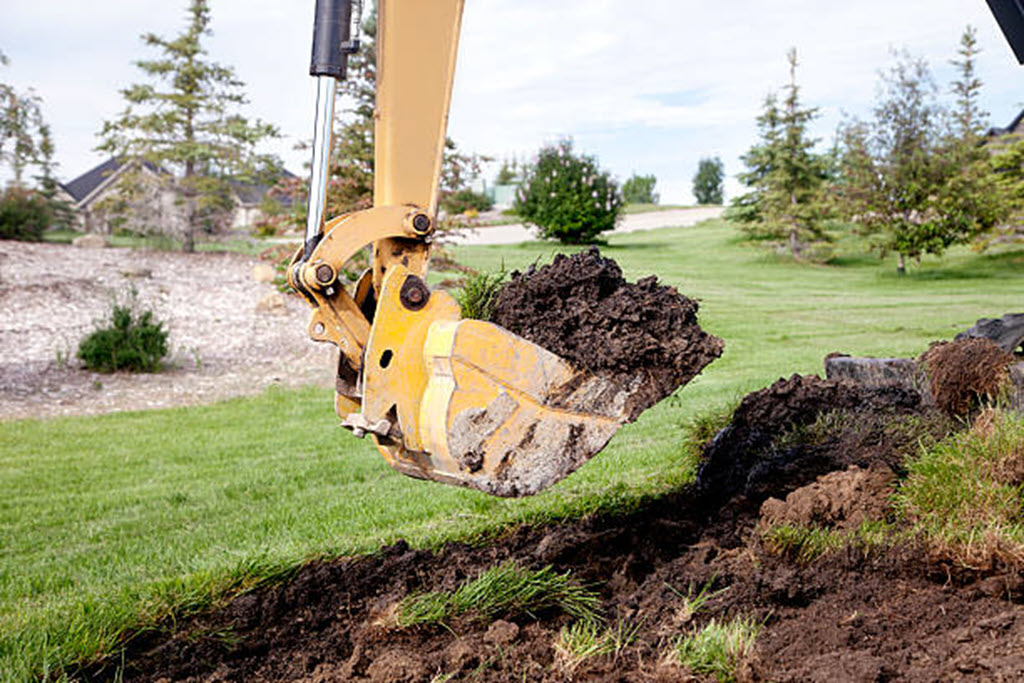Cable Trenchingsin Marysville MI
Cable Trenching Done Right for Secure Utility Installations
We Are Locally Owned & Operated For Over 37 Years
Contact Us Today!
We Serve Businesses In And Around The Following Cities:
About Cable Trenchings
Understanding Cable Trenching in Marysville
People residing in cities such as Marysville often interact with the concepts of road, housing, and building construction but rarely consider the utilities that make everyday living and working possible. One such key utility is the complex network of cables lying underground that powers homes and commercial premises, providing essential services like internet, gas, and electricity. The process of embedding these cables into the ground is where the services of trenching contractors become essential—and this article focuses on the dynamic process of cable trenching, a crucial yet often overlooked aspect of commercial site development.
Demystifying the Excavation Process
The dynamic process of cable trenching starts with initiating a trench—a narrow and dug up depression in the ground created by a specialized team of trench digging contractors using cutting-edge technology and machinery. This earthwork, usually carried out by trenching excavation companies, forms a vital part of the infrastructure planning phase in commercial property development, including schools, factories, and office buildings. The requirement of a trench completely depends upon the type of underground utility lines—for example, a trench for a propane line will typically be shallower than one required for high voltage electrical lines.
The role of companies like D&J Contracting goes beyond just the mechanism of digging the trench—it encompasses planning, marking the location of the trench, preparing the ground, ensuring safety measures, and backfilling post the cable installation. These trenching departments have the capability of trenching and boring contractors, as boring helps in drilling under existing structures without disrupting them.
Unravelling the Benefits of Trenching
Utilizing the services of an experienced and reputable trenching contractor such as D&J Contracting gives a compelling competitive edge to commercial properties. The benefits aren’t just restricted to providing essential utility services, but also extend to factors such as property value, safety, and future expansion.
From a financial standpoint, embedding cables below the ground is a practical and cost-effective long-term solution compared to overhead cable installations. It eliminates the risk of damage caused by weather conditions, reducing the chances of outages—and consequently, potential business operation disruptions. Furthermore, well-planned underground utility line trenching can easily accommodate potential property expansion needs in the future.
Equally crucial are the safety benefits of underground cables. This technique effectively reduces the risk of electrocution or utility line damage caused by accidents, unintentional digging, or vandalism. The buildings also become aesthetically pleasing when free of visible overhead cables.
Real-world Applications of Cable Trenching
The real-world applications of cable trenching become apparent when we consider several commercial properties in Marysville that have benefited from these services. Take the case of a major departmental store in the heart of Marysville that planned a store expansion. By utilizing the expertise of a trench digging service near them, the company was able to reroute their utility lines to accommodate their new extension without interrupting their day-to-day operations.
D&J Contracting, a leading trenching contractor in Marysville, works with diverse commercial clients—all witnessing the myriad advantages of proper cable trenching. These include universities for their campus expansions, factories upgrading their power systems, new construction projects, and even city infrastructure expansions. Their experience assures clients about their handling of critical aspects like safety protocol adherence, minimizing environmental impact, and ensuring quick project completion.
It is important to note that although these real-world applications are primarily commercial, the scope of cable trenching extends to residential properties as well. The process remains roughly the same, from smaller homes to large commercial projects.
Cable trenching, although a vital process, often goes unnoticed. However, for commercial properties, the proper planning, execution and maintenance of these trenches is critical for everyday operations and long-term utility. By employing the services of reputable companies like D&J Contracting, businesses can ensure the uninterrupted supply of their utilities through their efficient and effective cable trenching services. So the next time you switch on your office lights or log into your Wi-Fi; think about the network of cables running under the ground, diligently serving your utility needs, courtesy of the cable trenching process.
Cable Trenchings Gallery


Call Us Today to receive your Free Quote for
Cable Trenching in Marysville
Serving: Marysville, Michigan

About Marysville, Michigan
Marysville traces its history back to 1786 when Antoin Morass built a sawmill at Bunce Creek. Later, in 1817, Zephaniah W. Bunce sailed up the St. Clair River and settled at the place of the mill, naming it Bunce Creek. This would later become the property of the Detroit Edison Marysville Power Plant. He later became postmaster and a member of the Michigan Territorial Council.
Meanwhile, two businessmen, Meldrum & Park, founded a sawmill in 1792 at the location now known as Cuttle Creek. This settlement was located in the southern part of current day Marysville, two streets are named after them.
Also having a street named for him was Colonel Andrew Mack, a native and the 11th mayor of Detroit. He bought Meldrum and Park’s mill and built his home and a general store along the St. Clair River. The small settlement with Mack’s general store and mill was called “Mack’s Place” and was awarded a post office. Mack was a state representative, Colonel in the War of 1812, and a co-founder of the Detroit Free Press. Colonel Mack and his wife, Amelia, are buried on the north bank of Cuttle Creek in the Riverview Golf Course.
Later, Edward P. Vickery settled at the present day foot of Huron Boulevard in Marysville. He named the operation Vickery’s Landing and the settlement surrounding it eventually became known as Vicksburg. In 1854, the Mack’s Place post office was transferred to Vicksburg. However, there was already another Vicksburg, Michigan, so in 1859 the name was changed to Marysville, after Nelson Mill’s wife Mary.
These small settlements were brought together by inventor and engineer, C. Harold Wills. He worked at the Ford Motor Company, and was considered the “right-hand man” of Henry Ford. His contributions to the Ford company included designing Models A through T of the early Ford Motor Company. He was the inventor of many auto improvements including the planetary transmission used in the Models S and T. He was a pioneer in the use of vanadium steel and designed the “Blue Oval” logo, still used on Ford Products today. He resigned in 1919 and moved to Marysville to establish the C. H. Wills & Company on the banks of the St. Clair River. Two years later in 1921, the first Wills Ste. Clair automobile was produced (named for the factory’s location on the St. Clair River). The factory closed in 1926 after 14,000 vehicles were made by the Wills factory.
Wills’ and his partner John Lee provided much of the early infrastructure of Marysville, including electricity, sidewalks, roads, etc. so that Wills is credited with the street design and city planning of Marysville. He nicknamed Marysville the “Dream City”. The main area of the city to be developed before his company folded was the area surrounding Washington Elementary School. The community was deeply affected by the Great Depression, and the vision for the city was never fully realized. Subdivision development in the later half of the 20th century has further offset the strategic plan for the City of Marysville.
Wills did succeed to the extent that the Marysville area is nowadays a vibrant community. Wills’ former factory currently houses the Chrysler Corporation MOPAR parts distribution facility.
Marysville was incorporated as a village in 1919. It became an incorporated city in 1924.
- According to the United States Census Bureau, the city has a total area of 8.30 square miles (21.50 km), of which 7.31 square miles (18.93 km) is land and 0.99 square miles (2.56 km) is water.
- It is considered to be part of the Thumb of Michigan.
- Marysville can also be considered as in the Blue Water Area.
- The city lies on the border between Michigan and Ontario formed by the St. Clair River
- Marysville is neighbored by Port Huron, Michigan to the north, St. Clair, Michigan to the south, Kimball Township, Michigan to the west, and Corunna, Ontario to the east.
| Census | Pop. | Note | %± |
|---|---|---|---|
| 1920 | 941 | — | |
| 1930 | 1,405 | 49.3% | |
| 1940 | 1,777 | 26.5% | |
| 1950 | 2,534 | 42.6% | |
| 1960 | 4,065 | 60.4% | |
| 1970 | 5,610 | 38.0% | |
| 1980 | 7,345 | 30.9% | |
| 1990 | 8,515 | 15.9% | |
| 2000 | 9,684 | 13.7% | |
| 2010 | 9,959 | 2.8% | |
| 2020 | 9,997 | 0.4% | |
| U.S. Decennial Census | |||
As of the census of 2010, there were 9,959 people, 4,160 households, and 2,738 families residing in the city. The population density was 1,362.4 inhabitants per square mile (526.0/km). There were 4,515 housing units at an average density of 617.6 units per square mile (238.5 units/km). The racial makeup of the city was 97.5% White, 0.3% African American, 0.2% Native American, 0.6% Asian, 0.4% from other races, and 0.9% from two or more races. Hispanic or Latino of any race were 1.8% of the population.
There were 4,160 households, of which 29.8% had children under the age of 18 living with them, 53.1% were married couples living together, 9.1% had a female householder with no husband present, 3.6% had a male householder with no wife present, and 34.2% were non-families. 30.3% of all households were made up of individuals, and 14.7% had someone living alone who was 65 years of age or older. The average household size was 2.39 and the average family size was 2.99.
The median age in the city was 42 years. 23.4% of residents were under the age of 18; 7% were between the ages of 18 and 24; 24% were from 25 to 44; 28% were from 45 to 64; and 17.5% were 65 years of age or older. The gender makeup of the city was 48.1% male and 51.9% female.
As of the census of 2000, there were 9,684 people, 4,025 households, and 2,741 families residing in the city. The population density was 1,395.6 inhabitants per square mile (538.8/km). There were 4,180 housing units at an average density of 602.4 units per square mile (232.6 units/km). The racial makeup of the city was 98.18% White, 0.18% African American, 0.30% Native American, 0.43%Asian, 0.01% Pacific Islander, 0.33% from other races, and 0.57% from two or more races. Hispanic or Latino of any race were 1.16% of the population.
There were 4,025 households, out of which 30.8% had children under the age of 18 living with them, 57.4% were married couples living together, 8.0% had a female householder with no husband present, and 31.9% were non-families. 28.5% of all households were made up of individuals, and 14.3% had someone living alone who was 65 years of age or older. The average household size was 2.40 and the average family size was 2.96.
In the city, the population was spread out, with 24.4% under the age of 18, 6.9% from 18 to 24, 28.4% from 25 to 44, 23.3% from 45 to 64, and 17.1% who were 65 years of age or older. The median age was 39 years. For every 100 females, there were 94.0 males. For every 100 females age 18 and over, there were 89.2 males.
The median income for a household in the city was $49,299, and the median income for a family was $60,028. Males had a median income of $47,859 versus $27,321 for females. The per capita income for the city was $23,443. About 3.1% of families and 4.6% of the population were below the poverty line, including 5.1% of those under age 18 and 8.4% of those age 65 or over.
Call Us Today to receive your Free Quote for
Cable Trenching in Marysville
Related Services in Marysville, Michigan
We Serve Businesses In The Following Zip Codes:
48007, 48015, 48021, 48026, 48035, 48036, 48038, 48042, 48043, 48044, 48045, 48046, 48047, 48048, 48050, 48051, 48066, 48071, 48080, 48081, 48082, 48083, 48084, 48085, 48088, 48089, 48090, 48091, 48092, 48093, 48098, 48099, 48225, 48230, 48236, 48310, 48311, 48312, 48313, 48314, 48315, 48316, 48317, 48318, 48397